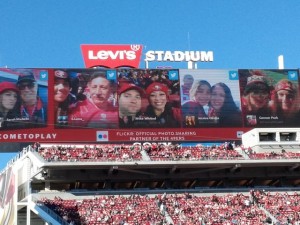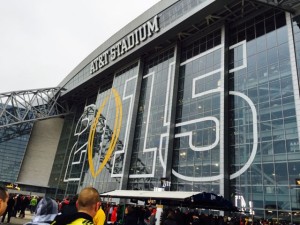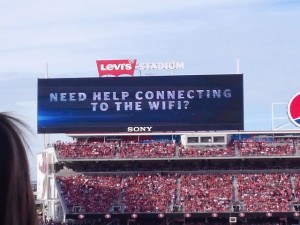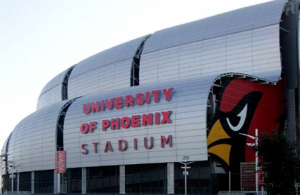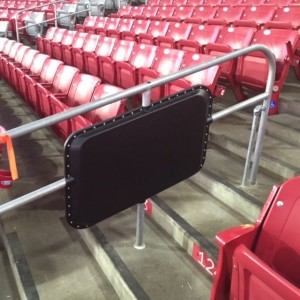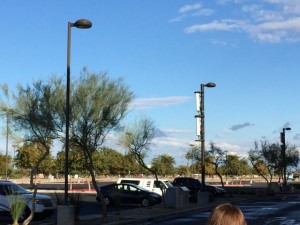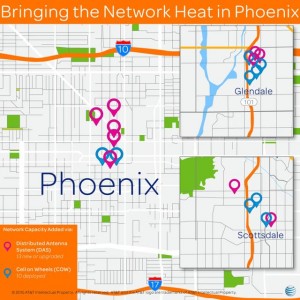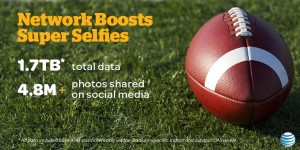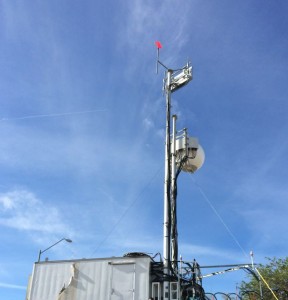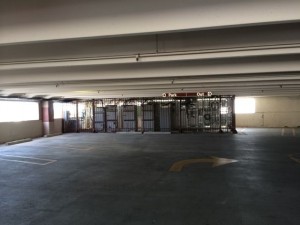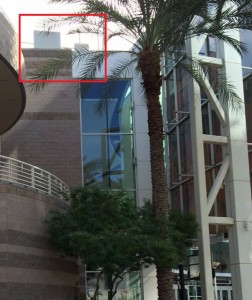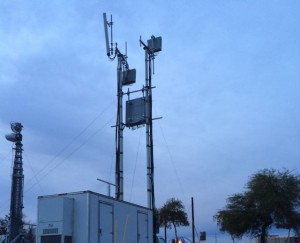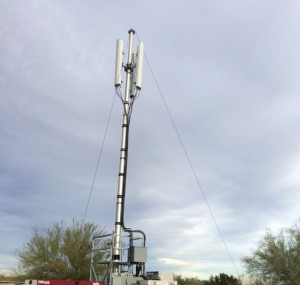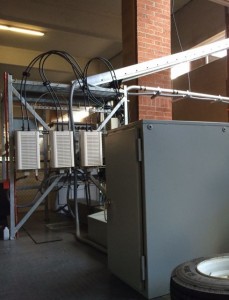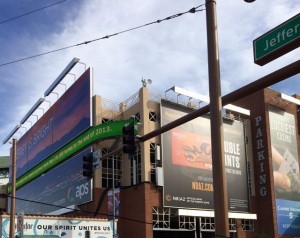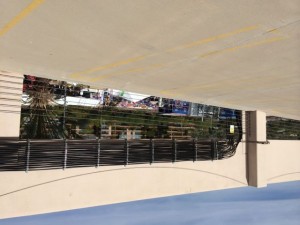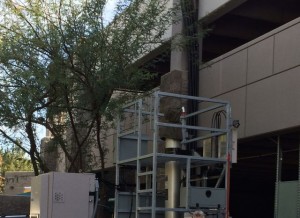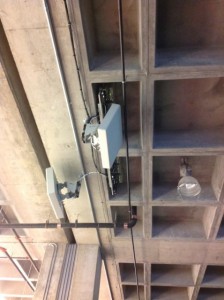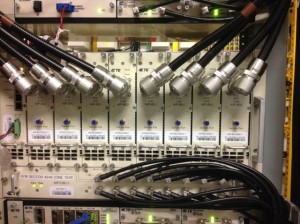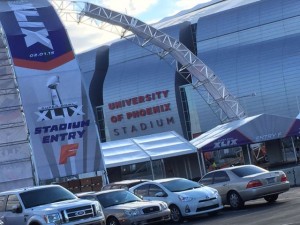
University of Phoenix Stadium before Super Bowl XLIX. Photo: Paul Kapustka, MSR (click on any photo for a larger image)
According to Mark Feller, vice president of technology for the Arizona Cardinals, more Wi-Fi has been added to the stadium networks for this football season, including lawn areas just outside the stadium and the Pat Tillman Plaza area on the north side of the stadium. For the Super Bowl last year the venue had extensive DAS coverage outside from a Crown Castle deployment, but in an email message Feller said adding Wi-Fi to the mix was always part of the plan. Here’s Mark:
“Our plan from the start was to have Wi-Fi outdoors for our fans to use and we are rolling it out as time allows. We have such good weather that there are thousands of people tailgating on game days. In addition, the Cardinals Mobile App (from Yinzcam) provides live Stadium Feeds, Replays, and the Red Zone Channel so our fans can keep up with the early games while they are outside.”
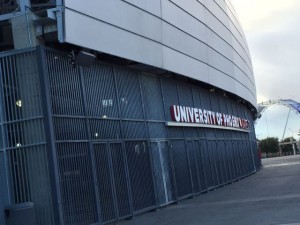
Outside UoP Stadium, where the architecture allows for DAS antenna placement under the fascia as well as behind speaker covers.
Getting ready for the playoff championship
For both the biggest college game of the year (scheduled for Jan. 11, 2016) which like last year should be a big network event, as well as a host of other “big events,” like a U.S. Women’s soccer team game vs. China on Dec. 13 and the Fiesta Bowl on New Year’s Day, Feller said the UoP stadium team is continuing to expand the Crown Castle DAS as well, with more sectors in the stadium’s Club and Loft sections, as well as more coverage outside on the lawns. Portable Wi-Fi is also an option, Feller said, as the stadium adds temporary seating to expand for the big game of the collegiate season:
“Having the Super Bowl here did give us some ideas about increasing density in some areas where we put temporary seating. We tested some different WiFi portable enclosure systems that we could put up and take down quickly and figured out how to get cabling to them quickly as well. That will help us get set up for the CFP Championship.”
